READER COMMENTS ON
"$45,588 Per E-Vote for Disabled Voters in Marin County, California"
(40 Responses so far...)
COMMENT #1 [Permalink]
...
Dredd
said on 11/25/2007 @ 4:16 am PT...
Wow "$55,357.14", that is even "cheap at half the price".
But in the most imperialistic nation elections are fronts for big money corporations like ES&S and Diebold, and the vote is merely an afterthought.
COMMENT #2 [Permalink]
...
Phil
said on 11/25/2007 @ 6:37 am PT...
Beats me how they justify that much money.
I have an idea.
17 * $55357 is $941069.00
$140K for 200 COMPUTERS and 200 PRINTERS and INK PAPER
$800K to be divided up among the hand counters, the Single programmer to type the template, and all the guns and weapons to protect the vote from the all the terrorists.
$1069 dollars for beer, coffee, pizza, soda, and cigarettes, and other "medical" things to smoke.
I think some money will be left over.
Maybe pay for extra paper and ink--safety factor? Maybe pay for the Bus Fare to go vote? Or take a pizza home with ya? Airfare and hotel for poll workers? Or Maybe buy some chickens for a family in Guatemala? A meal for a homeless Katrina victim?
Marin county is under environmental attack from bunker oil, so this story will probably get buried on CH 7 or 9 or whatever channel it is down there. Although it's shopping season now, all their "news journalists" are at the shopping malls and airports, likely shopping will cover up the story.
I love Marin, I do visit the deli in Molly Stones down there, they have the killer olive bread. I pick up break and go down and watch the kayak's practice, and drink a beer.
COMMENT #3 [Permalink]
...
flex
said on 11/25/2007 @ 10:07 am PT...
Thanks Brad!
How hard is this to understand? Every victim should sue ES&S's ass to recover their losses just like you've been saying all along!
"ES&S, the company which distributes them, is now being sued by the State of California for deploying uncertified AutoMARK machines in counties across the state, in violation of state law."
COMMENT #4 [Permalink]
...
Brad Friedman
said on 11/25/2007 @ 10:36 am PT...
Phil -
My original math was slightly off. The true cost per vote in Marin on the AutoMARK machines was off by $10,000. I've now corrected the numbers in the article, and noted the specific correction at the bottom.
COMMENT #5 [Permalink]
...
Agent 99
said on 11/25/2007 @ 10:45 am PT...
I was born and raised in Marin County.
You cannot accuse us of being tightfisted. 
COMMENT #6 [Permalink]
...
Linda
said on 11/25/2007 @ 1:42 pm PT...
So how do you compute the per vote cost at the precinct I work at in my county, Sonoma, just north of Marin County? For the Nov. 2006 election, not one single voter used either of our two machines. And at the previous election held, where we had these machines for the first time, only one voter voted on one of the machines, and that was toward the end of the day because we were BEGGING for someone to use one of them.
Two elections, two machines, one vote total cast on them.
Meanwhile, we aren't maintaining our public schools, and we can't seem to be able to afford health care for all.
COMMENT #7 [Permalink]
...
Brad Friedman
said on 11/25/2007 @ 3:18 pm PT...
Linda said:
Two elections, two machines, one vote total cast on them.
Meanwhile, we aren't maintaining our public schools, and we can't seem to be able to afford health care for all.
Frankly, I might suggest the two issues are closer related than you might even have meant when you posted the comment above. Unfortunately.
COMMENT #8 [Permalink]
...
Juliette
said on 11/25/2007 @ 8:16 pm PT...
Next why don't you calculate how much it costs per wheelchair user to use each ramp built for them in a county. Maybe we should just tell disabled people they should never leave the house because they are too expensive for us to bother with them.
COMMENT #9 [Permalink]
...
Linda
said on 11/25/2007 @ 9:20 pm PT...
Dear Juliette,
If these electronic voting machines were REALLY about helping handicapped voters, then they would actually provide each handicapped voter who uses them with an accurate vote, a verifiable record of that accurate vote, a reasonable method for checking for the accuracy of the votes cast on them, and they would run on a program that belongs to the citizens who choose to vote on them. Disappointingly, this is NOT what these electronic voting machines are really about, any more than NAFTA is about improving the wage and working conditions for citizens of Mexico and Canada, or about reducing the number of non-U.S. citizens who do illegal border crossings to find work.
Spare me the false argument that those of us who oppose these machines, for VERY GOOD REASONS I might add, are somehow opposed to spending a reasonable amount of money for disabled citizens to vote. You might be able to get away with that crap on FoxNews, but it won't fly in a community of better-informed people such as this one.
COMMENT #10 [Permalink]
...
jethro
said on 11/25/2007 @ 9:30 pm PT...
Juliette, I support your fiscally responsible proposal to keep them locked in their homes.
Brad, I'm sure disabled veterans appreciate learning of the irresponsible spending of tax dollars just so they can vote. I can't wait read your blog on the cost per wheelchair user to use the wheel chair ramp at the St. Louis Board of Elections.
I can understand complaining about the current state of electronic voting, but not the cost of making the right to vote privately available to all citizens.
COMMENT #11 [Permalink]
...
Brad Friedman
said on 11/25/2007 @ 9:57 pm PT...
Juliette said:
Next why don't you calculate how much it costs per wheelchair user to use each ramp built for them in a county. Maybe we should just tell disabled people they should never leave the house because they are too expensive for us to bother with them.
Interesting point, Juliette. As soon as it's found that those ramps don't do what they are supposed to do, and can't be properly used by folks in wheelchairs (as the e-voting systems made by Sequoia, Diebold, Hart Intercivic, ES&S et al are similarly built too low to be wheelchair accessible) please let me know.
Also, as soon as the cost for building ramps includes destroying all the stairs so folks can *only* use ramps --- the e-voting equivalent has now already happened in counties across the country --- let me know, and I'll help raise some hell about it.
Jethro said:
I can understand complaining about the current state of electronic voting, but not the cost of making the right to vote privately available to all citizens.
If that was either the point, or the success of the scheme, I'd be right their with ya, Jethro. Such as the entire thing is a scam from top to bottom, however, I'm not falling for it, and neither should you.
Witness the former CA SoS' torpedoing of a low-tech, cheap solution which does the same thing, while in the meantime certifying every non-working, hackable, expensive electronic alternative and you'll begin to see just the tip of the iceberg. Peruse another thousand or so articles here in the BRAD BLOG archives, and you may even get a glimpse of the iceberg itself.
COMMENT #12 [Permalink]
...
jethro
said on 11/25/2007 @ 10:02 pm PT...
Brad, what was the low-tech, cheap solution?
COMMENT #13 [Permalink]
...
jethro
said on 11/25/2007 @ 10:04 pm PT...
Never mind. I just read your blog again.
COMMENT #14 [Permalink]
...
Michelle Gabriel
said on 11/25/2007 @ 10:05 pm PT...
I had heard, but don't have anything to back it up, that many polling places are not wheelchair accessible. I know that Automark is for multiple disabilities, but I see the argument here about wheel chair ramps. So I think it is ironic,if true, that you have the equipment for accessiblity of voting, but it's not accessible to many of those who need it.
This shows the lack of understanding and a total systems approach to the problem. Throw an expensive solution out there for one small piece of the overall problem.
COMMENT #15 [Permalink]
...
Juliette
said on 11/25/2007 @ 10:33 pm PT...
Brad, Linda, et al,
The AutoMARK in question is simply a ballot marking device (not a tabulator). It marks the same ballot that everyone else marks. It marks them accurately when properly calibrated and it is completely verifiable in case it is not properly calibrated. (I have voted on them.) I agree it would be nice to have open source software running them, but as it stands, no certified supplier offers that. The market is open for anyone to offer an open source solution.
As for "false arguments", the real argument in this particular article is cost per voter. That is what I was commenting on, nothing else.
The AutoMARK doesn't sit too low. It just sits on a table. You can put it on any height table needed to be appropriate. Furthermore, the primary user would be visually impaired, not necessarily in a wheelchair.
Please educate me on what counties force all voters to *only* vote on AutoMARKs. I doubt that has happened anywhere when the same ballot could be marked by pen (more quickly) and tabulated the same way. Furthermore, if that were the case, it would destroy your argument about cost per voter.
Lastly, while I don't doubt these machines come with significant costs to counties, and tax dollars are tax dollars; weren't most of these purchased with federal grants as part of HAVA?
COMMENT #16 [Permalink]
...
Brad Friedman
said on 11/25/2007 @ 10:56 pm PT...
Juliette said:
It marks them accurately when properly calibrated and it is completely verifiable in case it is not properly calibrated. (I have voted on them.)
And you know that (it marks them accurately) how, exactly? And what if it's not properly calibrated, btw?
Because ES&S refused to submit them to Bowen's "Top-to-Bottom Review" we don't really know how accurately they do anything, unfortunately.
And mind you, I'm a supporter of use of the AutoMARK over other currently certified disabled/blind voting "solutions" for the reasons you mention (it marks a paper ballot).
But the company which has distributed it until now, ES&S, is a terrible company which has misrepresented products over and over again, has over-priced the AutoMARK to push folks towards the products that they manufacture (they only distribute the AutoMARK, essentially, so they'd rather have folks buy their shitty hackable iVotronic DREs instead), and has taken one county and state after another to the cleaners with their mafioso-like "business" tactics.
I agree it would be nice to have open source software running them, but as it stands, no certified supplier offers that.
Actually, I didn't say anything about "open source software" at all here, though I'm certainly a supporter of publicly disclosed source code if such systems are to be used in any fashion. That said, it's just one small part of needed election reform, and a minor bandaid at that, to be frank.
The AutoMARK doesn't sit too low. It just sits on a table. You can put it on any height table needed to be appropriate.
Glad to hear it. Again, since ES&S refused to submit the system to CA's Top-to-Bottom Review, I'll have to take your word for it. All the other touch-screen and/or DREs tested, supposedly accessible systems, were found to not even have enough room beneath them for a wheelchair by CA's accessibility study.
Furthermore, the primary user would be visually impaired, not necessarily in a wheelchair.
Um, so you're angry with me for calling out an absurd $45k price tag per vote here, but willing to toss wheelchair users over the side??
Please educate me on what counties force all voters to *only* vote on AutoMARKs.
No counties, as far as I know. But many counties have done exactly that with the other so-called "accessible" DRE systems such as the Sequoia Edge, Diebold TS, ES&S iVotronic, Hart Intercivic Eagle, etc.
Even Rep. Rush Holt has told me personally, that if it were up to him, *every* voter would be voting on an electronic Ballot Marking Device (though he incorrectly conflated DREs with BMDs)
Lastly, while I don't doubt these machines come with significant costs to counties, and tax dollars are tax dollars; weren't most of these purchased with federal grants as part of HAVA?
Not sure what the point is there. Yeah, most came from tax dollars sent to the Feds instead of to states. And the difference is what exactly?
Either way, the tax payer has been screwed, and the blind/disabled have been used for a boondoggle.
BTW, since you've voted on one before, I'm curious...How does a blind voter verify that the AutoMARK has marked his ballot as he/she intended?
COMMENT #17 [Permalink]
...
jethro
said on 11/25/2007 @ 11:36 pm PT...
After reviewing the Vote-PAD website it is clear that it will never by certified for use in California. The manufacturer does not feel this product requires federal certification even though it uses Excel macros to create the audio and manage other setup functions. Following the current law not even Secretary Bowen could certify the Vote-PAD without it first getting Federal certification. Perhaps it would be more effective to encourage the manufacturer to certify it federally rather than blame Bruce McPherson. It certainly looks like a product with great potential.
Could you elaborate on your assertion that I've been screwed while concurrently being used for a boondoggle?
COMMENT #18 [Permalink]
...
Juliette
said on 11/25/2007 @ 11:48 pm PT...
>And you know that (it marks them accurately) how, exactly? And what if it's not properly calibrated, btw?
I know that because I can see the ballot that comes out. Blind people know that by reinserting their marked ballot. If it isn't properly calibrated, you can spoil the ballot and revote.
>has over-priced the AutoMARK to push folks towards the products that they manufacture (they only distribute the AutoMARK, essentially, so they'd rather have folks buy their shitty hackable iVotronic DREs instead)
Not really true. They are currently pushing InkaVote in some places, which they also do not manufacture. They probably price their equipment to profit handsomely regardless if they manufacture or not.
>Again, since ES&S refused to submit the system to CA's Top-to-Bottom Review, I'll have to take your word for it.
Don't take my word for it. Just look at one. It doesn't take a Top-to-Bottom review to see the thing sits on a table.
>And the difference is what exactly?
You were stating cost to the county (see article's first paragraph) and if the Feds paid for the purchase, it isn't an accurate assessment of what the cost to the county is.
>How does a blind voter verify that the AutoMARK has marked his ballot as he/she intended?
They can reinsert a marked ballot and it will speak to them (through headphones) what was marked. Yes, there is a trust issue you can debate here, but there is no advantage to miscoding it, since it is programmed to work this way without knowing the ballot layouts that will be used. Also, most counties probably test this function as part of their regular testing.
Again, I didn't post originally to debate ES&S ethics or other equipment. I was just commenting on the cost of franchising visually disabled voters. I saw a blind man who had never marked his own ballot prior to voting on an AutoMARK and his happiness was priceless!
COMMENT #19 [Permalink]
...
Brad Friedman
said on 11/26/2007 @ 9:08 am PT...
Juliette said:
>And you know that (it marks them accurately) how, exactly? And what if it's not properly calibrated, btw?
I know that because I can see the ballot that comes out.
I see. So you've seen one (or more) ballot come out correctly and you presume it "marks them accurately". By that reasoning then, we could also presume that DREs record ballots correctly and op-scans do as well. That, despite testing and real-life occurrences that have shown otherwise.
Not trying to challenge you, or say that you are wrong. I'm saying that you're making assumptions similar to those made across the industry that have proven wrong time and again under actual scrutiny by professionals and other real-world situations.
You may like the machines (as do I, in general theory, if not execution and business practices by those who distribute them) for disabled/blind voters only, but to declare they mark votes accurately is a benefit-of-the-doubt/logic-leap I'm not prepared to make.
Blind people know that by reinserting their marked ballot. If it isn't properly calibrated, you can spoil the ballot and revote.
You mean if they notice that it isn't properly calibrated, and if the machine reports it to them that way when the ballot is re-run, presuming they have time to do so.
>has over-priced the AutoMARK to push folks towards the products that they manufacture (they only distribute the AutoMARK, essentially, so they'd rather have folks buy their shitty hackable iVotronic DREs instead)
Not really true. They are currently pushing InkaVote in some places, which they also do not manufacture. They probably price their equipment to profit handsomely regardless if they manufacture or not.
Not from my reporting. We've seen and heard cases from all over the country, where ES&S reps didn't show AutoMARK, or underplayed it, or overpriced it in order to drive purchasers towards their iVotronic.
As to the InkaVote, the only place it's used in CA is in Los Angeles County, and it's only used in another 2 counties or so elsewhere in the country. They push their own gambling/voting machines, usually DREs, more than anything else, as that's where the big money is.
>And the difference is what exactly?
You were stating cost to the county (see article's first paragraph) and if the Feds paid for the purchase, it isn't an accurate assessment of what the cost to the county is.
If you're going to make that silly distinction, then I'll point you that no, the counties pay for them on their own, and later are re-reimbursed for some or all of the purchase by the Feds. Not all costs of the machines are covered by the Feds. And yes, it is a cost to the county, in that they could use that money for other voting systems instead. Perhaps ones that weren't so over-priced, freeing up funding for other matters.
>How does a blind voter verify that the AutoMARK has marked his ballot as he/she intended?
They can reinsert a marked ballot and it will speak to them (through headphones) what was marked. Yes, there is a trust issue you can debate here, but there is no advantage to miscoding it, since it is programmed to work this way without knowing the ballot layouts that will be used. Also, most counties probably test this function as part of their regular testing.
That's a whole lot of presumptions and assumptions, Juliette. And if you think "there is no advantage to miscoding it..." you're not aware of how hackers work.
Again, I didn't post originally to debate ES&S ethics or other equipment. I was just commenting on the cost of franchising visually disabled voters. I saw a blind man who had never marked his own ballot prior to voting on an AutoMARK and his happiness was priceless!
Yes, coincidentally, so have most supporters of E-voting. From Dodd to McPherson et al. They have all been moved by the same purported scene. That's great.
I'll be moved when blind, disabled and non-blind and non-disabled voters can all vote privately, independently and be able to know for certain that their vote has been counted accurately.
Until then, you're looking at a mirage.
COMMENT #20 [Permalink]
...
Juliette
said on 11/26/2007 @ 9:45 am PT...
First you complain about the AutoMARK and then you complain they don't offer them in more places. I know they are pushing the InkaVote in at least one other state and they pushed the AutoMARK all over the west. I know hackers aren't swinging elections by hacking precinct machines that see 0 to 1 ballots per election. I know the AutoMARK can tell you how it has marked a ballot or if the marking failed. I'm not here to argue if the sky is falling or not. Nor am I here to discuss pricing or machines and companies not in the article. You said the cost to Marin county (who LIKES their machines) is $45,588 per E-Vote, which is plain wrong if they were partially reimbursed by the Feds, but I'm not discussing that either. I am pointing out that it is expensive to accommodate people with disabilities, but we as a society have decided that is worthwhile. The courthouse in Loving County, Texas has a wheelchair ramp that will probably never see a wheelchair, but we have decided to make things accessible even though it isn't always cost-effective or cheap.
COMMENT #21 [Permalink]
...
Linda
said on 11/26/2007 @ 11:39 am PT...
Dear Juliette,
The issue here is NOT that taxpayer money should not be spent to provide some handicapped voters with a way to vote privately. The issue IS that truckloads of taxpayer money should NOT be indiscriminately thrown into a den of lobbying thieves and liars who are bribing our legislators to allow them to provide us with a false solution to one problem, while providing us with a huge cornucopia of even more vote tabulating problems than we could ever experience without their "solution."
THAT is the false argument I am referring to.
Sure! Let's provide a way for those particular handicapped voters to vote privately, and let's make sure that way doesn't undercut our election process!!! How on earth can this be something that anyone other than those who are financially benefitting from the national voting machine hustle could object to?!
COMMENT #22 [Permalink]
...
Brad Friedman
said on 11/26/2007 @ 1:04 pm PT...
Juliette -
Perhaps one of the problems here, that Linda highlights a bit in her comment above, is that we are not dealing with a Red/Blue, Left/Right, Republican/Democratic, Liberal/Conservative, With Us/Or Against us issue here, as many have come to expect in our current culture. I'd argue that most such issues are not that way, despite the Corporate MSM's interest in painting them that way.
This is not a matter of being in favor or against AutoMARKs. Or in favor or against disabled/blind voters right to cast a ballot in a secure, private, independent manner. Though the latter has been used, by cretins and the under-informed alike, to push for "solutions" which ultimately do more harm than good.
You'll note if you re-review my original article, I never said "AutoMARKS are bad". Nor did I say, "we shouldn't spend money to allow blind/disabled voters the same rights others enjoy".
I did, however, report on the inappropriately high cost of machines that are purposely over-priced by a company which has proven, in the words of CA SoS Debra Bowen to have "ignored the law over and over and over again".
I also noted that the Registrar of Marin is pushing to continue working that law breaking corporation, at tax payer expense, to use machines that are not certified for use in California and were secretly and illegally deployed by ES&S.
That's no way to run an American election, if you ask me. And it's not about Blind people: For 'em or against 'em? AutoMARKs: For 'em or against 'em?!
It's about what the hell is going on here, and how to highlight the boondoggle that Linda highlighted smartly in her comments above.
If you are willing to give a pass to all form of corruption, extortion, heavy-handed business practices, bilking of tax dollars, to use an illegal system with questionable (largely untested) integrity at any and all cost, simply so that a very small segment of the population can maybe have their votes counted correctly (no proof necessary), that's up to you.
I'm not so willing, and believe that those who want our "business", via the inappropriate privatization of our public elections, need to perform a helluva lot better before we offer then a single dime. For anything.
Hope that helps, and that you read this (and the other replies I've given you) in the spirit in which they are intended.
COMMENT #23 [Permalink]
...
Jethro
said on 11/26/2007 @ 2:08 pm PT...
Brad, I see you were able to twist Juliette's comment into a debate over ES&S equipment rather than the point of her initial remark. She was bringing notice to the falacious aspects of your argument attempting to connect the evils of electronic voting to the cost associated with making the right to vote privately available to ALL citizens. Comment all you wish on the AutoMark being an overpriced piece of junk, or your fear of some vast conspiracy to rig our elections, or the cost of these machines per voter using the voter turnout; but when you isolate a community of voters and intentioally point your finger at how expensive it is to allow them to vote you assert that this cost is a burdgen too large for society to bear. What minority group do you plan to attack next? How about calculating the cost for each Chinese American to vote in Marin county?
Call HAVA a boondoggle if you wish, but I am quite certain I remain a member of the federal community to which these machines are intended to benefit. Are you asserting that disabled Americans have no value in American Society? I guess in your prejudice opinion we are just too expensive to be a part of your society. It must be nice being a child of privilege.
Brad, I would love to read more from you regarding the reason Bruce McPhereson "refused" to certify the Vote-PAD. Any idea when the makers of Vote-PAD plan to have it Federally certified, so that it can get certified in California? Have you looked closely at this product? How do you know the Excel macros are creating the audio instructions correctly and in the proper contest order without certification? How do you know this vendor is credible? Should America just take your word?
How do you propose a city like Chicago use the Vote-PAD? Chicago has almost 3000 precincts with hundreds of precinct level contest creating hundreds of unique ballots. This system might work in a very very small jurisdiction, but it is logistically prohibitive to large jurisdictions such as Chicago. The standard Vote-PAD package they sell is for a one precinct one ballot election at a cost of $2000 to $2200. Is that cheap consdering what is included in the standard package? I hope not. Have you reviewed the amount of labor required to setup this product for each unique ballot? Good luck setting up February's primary in Chicago or even Marin county. I think the Vote-PAD shows promise, but like ALL voting solutions it is FAR from prefect. I see your attempt to vilify Bruce McPherson for "refusing" to certifying this product as sensationalized journalism bending the truth through ommission.
COMMENT #24 [Permalink]
...
Linda
said on 11/26/2007 @ 2:36 pm PT...
Well, it appears that there are some participants here who would rather distract the discussion from the meaningful one about the outrageous cost to the American taxpayer of these cheap, shoddy machines, and make up one about a perceived prejudice against spending any money at all to help some handicapped voters vote secretly.
This is EXACTLY what FoxNews does, and is the reason I disconnected my cable TV 11 years ago and no longer listen to the mal-information available on those airwaves.
Brad, I agree that this whole voting machine boondoggle has been a huge rip-off to the American taxpayer. The other seven citizens who worked with me at my voting precinct in Nov. 2006 were of a similar opinion, and in my particular circle of friends who are informed about this topic and so have meaningful opinions, there is unanimous agreement that we taxpayers have been royally ripped off by this HAVA expenditure.
Thanks for exposing this. If others consider this to be sensationalism, well, that is their right.
Heck, there are STILL people around who think Saddam Hussein was involved in 9/11, and that WMDs have been found in Iraq, so go figure ...
COMMENT #25 [Permalink]
...
Chris Hooten
said on 11/26/2007 @ 3:50 pm PT...
Jethro, Juliette:
Sheesh, stop trying to twist this into an anti-handicapped-individual thing. Nobody, handicapped or not, needs an overly complicated, hackable, mistake-prone, and ungodly expensive computerized voting apparatus. Give me a break. It doesn't benefit anyone(well, voters anyways). I can't understand your intentions to paint this as an anti-handicapped issue, other than to draw attention away from the real problem. I don't care if you are handicapped or not, I don't want my vote stolen/adjusted/hacked just so you can use a big fancy machine. And there are other cheaper, simpler solutions available.
Nobody here hates handicapped people, so quit trying to sell that turd here.
COMMENT #26 [Permalink]
...
jethro
said on 11/26/2007 @ 4:30 pm PT...
Linda, I think you're selectively reading. It's clear that no one you care about suffers from a disability. I love that you use the word "handicapped" while refering to us "some participants here who would rather distract the discussion". Is that colored family still living in your neighborhood?
I'll try this one more time. I do not argue that these machines are crap and need MAJOR improvements in the entire system. I am arguing that alienating the population that these tax dollar were intended to help is disrespectful. This blog insinuates that the cost of providing the right to vote to disabled Americans is too high for able bodied America to bear.
Have any of you ever had to have someone else fill out your ballot? Never mind, that's right you can do it yourself. Strangely enough I also prefer to vote independently even if the system needs future improvements. What are you so frightened of the security risk that these machines present when less than one vote per election per machine is getting cast? Give me a break.
Is health care for the elderly also a bad idea? How do you feel about Social Security? Should these concepts be thrown out too because you have a health care and a pension and feel the cost is too high?
btw Linda, how are Saddam Hussein or WMDs in Iraq even remotely conected to alienating a minority population? I think it might be a good time to take the foil off you head.
COMMENT #27 [Permalink]
...
Linda
said on 11/26/2007 @ 4:52 pm PT...
Dear Jethro,
Re "It's clear that no one you care about suffers from a disability." It's clear to me that you've got yourself one huge axe to grind, since you know absolutely nothing about my involvement with family members, friends, and citizens who have physical/mental handicaps/disabilities that might prevent them from being able to cast a secret vote. So grind away, Jethro. And keep up the word parsing. It's so ... distracting.
Re "Is health care for the elderly also a bad idea? How do you feel about Social Security? Should these concepts be thrown out too because you have a health care and a pension and feel the cost is too high?" More evidence that you are a professional axe-grinder since, once again, you have no knowledge whatsoever about how I might be directing my efforts toward these issues.
Re "Have any of you ever had to have someone else fill out your ballot?" Yes. Any more questions?
Re "What are you so frightened of the security risk that these machines present when less than one vote per election per machine is getting cast?" I'm not frightened, Jethro. I'm informed about them. Big difference. And the fact that less than one vote per election per machine is getting cast is a GOOD thing, given how antithetical they are to the democratic vote process.
And Jethro, Saddam and WMDs are two terrific examples of ways in which Americans are horribly misinformed and uninformed. Therefore, it ties in beautifully with the misinformation circulating here about some perceived "fear" of "security risk(s)" posed by "these machines."
And lastly and I DO mean lastly, as I will not be back to speak with you again, re "I am arguing that alienating the population that these tax dollar were intended to help is disrespectful." No population has been alienated here, Jethro. Just you and possibly Juliette. Sorry you feel "disrespected," but that's your perceived problem, as I feel it doesn't even exist.
COMMENT #28 [Permalink]
...
Agent 99
said on 11/26/2007 @ 5:18 pm PT...
Where the hell is the_zapkitty when we need him?
COMMENT #29 [Permalink]
...
jethro
said on 11/26/2007 @ 5:29 pm PT...
Chris, It's refreshing that your remarks are so predictable.
It doesn't benefit anyone(well, voters anyways).
I do believe I am a voter. So, should I consider myself eliminated from the scope of the term "anyone". Should I also forget that I continue to be an American citizen?
I don't care if you are handicapped or not, I don't want my vote stolen/adjusted/hacked just so you can use a big fancy machine.
How is your vote in any way related to mine? The blog above clearly states that only 17 votes were cast over two elections. Do you really think someone can rig an election by altering an average of 8.5 votes per election cast on these scary machines. Not exactly a prime target to hack. I suspect finding thousands of votes cast with only 9 voters using the machine might raise a red flag.
Chris, could you please give me a scenario where these 17 voters can cause you vote to be stolen/adjusted/hacke while I'm using this not so big but semi-fancy machine? I like that your paranoia trumps my right to vote. You better keep an eye on us "handicapped people" since we are part of that vast conspiracy to compromise your vote and spend your tax dollars.
And there are other cheaper, simpler solutions available.
Well, Chris could you point out one cheaper, simpler solution that is certified for use in California? The low tech, cheaper solution Brad mentioned in this blog cannot get Certified in California without Federal certification. The makers of Vote-PAD do not feel their product needs to be certified. What do they have to hide?
Chris if you know of other cheaper, simpler solutions not mentioned by Brad please bring me up to speed. Especially, if they have Federal Certification because if they don't then calling them a solution would be an poor use of the word solution.
Nobody here hates handicapped people, so quit trying to sell that turd here.
Then Chris quit trying to sell the paranoia that 17 vote over two elections somehow puts your vote at risk turd.
I look forward to reading how you propose those 8.5 votes per election are going alter YOUR vote.
COMMENT #30 [Permalink]
...
jethro
said on 11/26/2007 @ 5:41 pm PT...
Linda, finally we agree:
...it ties in beautifully with the misinformation circulating here about some perceived "fear" of "security risk(s)" posed by "these machines."
With only 17 votes cast over two elections I it is a perceived "fear" of "security risk(s)" posed by "these machines".
COMMENT #31 [Permalink]
...
Chris Hooten
said on 11/26/2007 @ 8:12 pm PT...
Are you semi computer illiterate or something? One computer can be compromised, It thusly can compromise the central tabulator, and the entire election modified however someone wants. Jethro, using these computers is sheer folly. What is it, inherently, that makes them more suitable than other much more secure and simple alternatives? *One* machine used *once* can alter the results of an entire election. That is unacceptable whether the users are handicapped or not. These vulnerabilies have been found in all current computerized voting machines. You are beginning to smell like a voting machine company shill, and not someone just interested in easier access to voting for disabled, blind, or deaf individuals.
Put simply, these machines suck total ass, and people with special needs deserve much better.
COMMENT #32 [Permalink]
...
Brad Friedman
said on 11/26/2007 @ 8:53 pm PT...
Jethro is more than "begining to smell like a voting machine company shill," Chris. It's likely little coincidence that he's parked in Sacramento writing his nonsense.
I'd have bothered to take him seriously, as I did Juliette, but for a few dead give aways beginning (but certainly not ending with: "your fear of some vast conspiracy to rig our elections"
That's wingnut/machine rep talking point #1. (For the record, I don't fear a "vast conspiracy", I fear just the one person recognized as able to flip an entire election across an entire county, and thus entire state, as University of California, Princeton, et al has pointed out time and again)
After that, his cover is entirely blown with the details he knows about Vote-PAD and talking point #37 out of the playbook about why McPherson torpedoed it. Followed by #38 which misleads, "What does she have to hide?!"
Yes, the guy's a pro.
That said, if he's willing to put his real name on his work, I'll be happy to continue the conversation with him. Like a grown up (give it a try "Jethro"!) But I'm not interested in letting him toss off disinfo point after disinfo point behind his presumed and cowardly veil of secrecy.
One point, however: I am in touch with plenty of blind and disabled folks who want nothing to do with these crappy machines and consider the entire affair the same boondoggle I do. They have been great supporters of our work at BRAD BLOG for years. From members of Bowen's TTBR team, to folks at the NFB (yes, the same NFB who received $1 million from Diebold) to blind and disabled Election Integrity advocates across the nation.
It's likely that Democratic politicians fold and cower in fear at the horse shit (Talking points #10 - #18) hurled by folks like "Jethro" and Jim Dickson, but I don't.
If you feel like having a legitimate discussion on these points, "Jethro", let me know. You've got my email address. But only when you're willing to come out of the closet, which I don't suspect you will, since you'd likely then have to reveal your true "disability" or lack thereof. Which I suspect you'll be far too cowardly to do. As most of you guys are.
Beyond that, good luck to you. Keep up the bad work! It's only your our democracy at stake.
COMMENT #33 [Permalink]
...
jethro
said on 11/26/2007 @ 9:08 pm PT...
I'm not the one claiming that they are secure. I agree these machines have much to be improved. I'm merely asking that you support your assertions.
Chris, I asked for a scenario of how your fears could actually happen. Not some speculative b.s. about it being possible. How could 8.5 votes contaminate to tally system when the fancy machine you're afraid of is merely printing the ballot for me which is then run through an optical scanner just like yours ballot. What you're asserting is in no way connected to my vote. I'm pretty sure I asked you to describe a method where MY vote can directly alter YOUR vote. Telling me that the a machine I use to create a ballot that is not connected to the one scanning the ballots can alter YOUR vote in absurd.
I also asked for some examples of the cheap solutions you mentioned earlier that would allow me to vote. You also mention them in again in your response but I have no idea who they are. I would love to research these solutions you mention. Would you please site these solution?
COMMENT #34 [Permalink]
...
Agent 99
said on 11/26/2007 @ 9:17 pm PT...
Jethro
Just go read some of the thousands of posts here on the subject if you're not a shill or a troll. I don't have any patience for people who purposefully twist others' statements and you're going on moderation queue until you have either bothered to educate yourself enough to engage in a real discussion, or you just dry up and blow away, if you don't cut it out really soon.
COMMENT #35 [Permalink]
...
Brad Friedman
said on 11/26/2007 @ 9:52 pm PT...
Jethro said:
I'm not the one claiming that they are secure. I agree these machines have much to be improved. I'm merely asking that you support your assertions.
No. You're not. Not by a long shot. And, of course, you know that. If you don't (and you do), just go read your screed at #23 wherein you alleged claims that have never been made and all matter of Fox-worthy attacks, insinuations, strawman arguments and related canards.
I've been in a debate or two in my lifetime. I've run the professional Ann Coulter off the air. I know when someone is making a legitimate request to "support assertions" and when someone is a shill and a ringer.
You have failed the test my friend. Even if it's merely a coincidence that you're based just outside of Sacramento, of course.
Be more careful next time. You could have succeeded in spreading a whole lot more disinfo before getting pegged, but you shot your load way too early. Looks like it's back to training school with ya!
COMMENT #36 [Permalink]
...
the_zapkitty
said on 11/27/2007 @ 4:51 am PT...
... Agent 99 inquired...
"Where the hell is the_zapkitty when we need him?"
Ack... I'm sorry I missed the party. I've been dealing with health issues.
COMMENT #37 [Permalink]
...
jethro
said on 11/27/2007 @ 11:52 am PT...
Call me what you will.
Brad said:
I've been in a debate or two in my lifetime.
I'd be willing to bet if it was a REAL debate requiring you to support your arguments with evidence you lost. Sticking to the issue with supporting evidence (at least based on this attempt at dialog) does not appear to be one of your strengths.
I suspect someone who wished to actually debate an issue would not ask a person to email them to finish to discussion away from the reading eyes of their minion.
Nor, would REAL debate deviate from the topic by trying to distract from the issue by making accusations that are not related to the topic of the debate.
Your buddies here have screen names like "Agent 99" and "the_zapkitty" and you want to give me grief for using the screen name "jethro" rather that address the topic. Wow, I'm sure that strategy wins the debate every time. It might work here in Fantasy Land, but it won't do much in a court of law.
What I've learned about Vote-PAD all came from the Vote-PAD website sited in the blog above. If you have issues with folks questioning your assertions you might consider reading the info on the website before making claims that someone "refused" to certify it. Please read http://www.vote-pad.us/FederalCertification.asp and you can read for yourself why Bruce McPherson was UNABLE to certify it for use in California. (Assuming you actually are familiar with California law) I asked Brad to discuss this further but he was too busy researching my IP address and creating smoke and mirrors to keep from addressing my questions.
I still think the Vote-PAD could be a great solution for a small jurisdiction. The manufacturer just needs to get it certified Federally. I asked you to discuss this but you felt avoiding the topic was a more effective method of debate.
Asking you to support you stories with something more that imagination should not offend. Simply support your claims with evidence. Although, I do enjoy reading fiction.
Unfortunately, I suspect I'll just receive more name calling rather than actual dialog to which I will close with "I know you are, but what am I"
COMMENT #38 [Permalink]
...
Brad Friedman
said on 11/27/2007 @ 7:58 pm PT...
"Jethro" said:
Wow, I'm sure that strategy wins the debate every time. It might work here in Fantasy Land, but it won't do much in a court of law.
When you find one that will let you argue your case simply as "Jethro" please let me know.
My record on debating and everything else is an open book. And it's done under my name. All of it. (You can feel free to listen to the debate with Coulter on Ron Insana's show and hundreds others like it all available here on BRAD BLOG. Knock yourself out.)
The reason I requested you contact me via Email was so that your real name would be kept confidential if you preferred it that way. Short of that, since your main hope seems to be to plant disinfo and strawman arguments (eg. "your fear of some vast conspiracy to rig our elections" and "What does she have to hide?!" et al) I'm not particularly interested in having a debate with a phony.
Demonstrate that you are not such a phony. You can do so by contacting me via email, where your identity will be kept private, and we can continue the issue. We can even do so publicly, once it's established that you're not the shill you appear to be.
As mentioned, I doubt you'll bother to out yourself. Even to me.
COMMENT #39 [Permalink]
...
Chris Hooten
said on 11/27/2007 @ 10:15 pm PT...
*Yawn*
Jethro, Jethro, Jethro...
"Nor, would REAL debate deviate from the topic by trying to distract from the issue by making accusations that are not related to the topic of the debate.
Hmmm, like coloring people as anti-handicapped, when the real issue is election integrity and security? Hahahah haha hah
Brad has *already* supported his arguments with copious amounts of supporting evidence, you just haven't read it yet, apparently. If your job is trying to misinform this blog, you have already failed.
COMMENT #40 [Permalink]
...
Chris Hooten
said on 11/27/2007 @ 10:36 pm PT...
Actually, to be fair, this specific article was more about the gigantic rip-off that these machines represent to the voters (who also pay taxes). But the main issue is that these machines are insecure, and there is no promise that anyone's vote will be properly tabulated when these machines are used, whether the person is handicapped or not.
 Things are really expensive in Marin County, California. For example, the cost to the county, so far, for each vote cast on their brand-new AutoMARK touch-screen voting machines has been $45,588.23.
Things are really expensive in Marin County, California. For example, the cost to the county, so far, for each vote cast on their brand-new AutoMARK touch-screen voting machines has been $45,588.23.

 Kamala Rising:
Kamala Rising: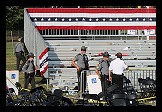 Evidence Fails to Establish Attempted Trump Assass-ination Politically Motivated
Evidence Fails to Establish Attempted Trump Assass-ination Politically Motivated Former MAGA 'Cultist' on the State of the Race for 'MAGA Americans': 'BradCast' 7/23/24
Former MAGA 'Cultist' on the State of the Race for 'MAGA Americans': 'BradCast' 7/23/24  'Green News Report' 7/23/24
'Green News Report' 7/23/24
 Biden Out, Endorses
Biden Out, Endorses BIDEN DROPS REELECTION BID
BIDEN DROPS REELECTION BID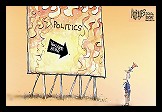 Sunday 'You Are Here' Toons
Sunday 'You Are Here' Toons What J.D. Vance Forgot to Tell You (and Lied About) at the RNC: 'BradCast' 7/18/24
What J.D. Vance Forgot to Tell You (and Lied About) at the RNC: 'BradCast' 7/18/24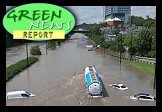 'Green News Report' 7/18/24
'Green News Report' 7/18/24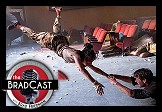 Holding on for Dear Life Amid the Political Whirlwind: 'BradCast' 7/17/24
Holding on for Dear Life Amid the Political Whirlwind: 'BradCast' 7/17/24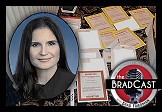 Cannon's Corruption: 'BradCast' 7/16/24
Cannon's Corruption: 'BradCast' 7/16/24 'Green News Report' 7/16/24
'Green News Report' 7/16/24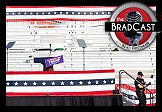 Amid the Assassination Attempt Aftermath:
Amid the Assassination Attempt Aftermath:
 Meanwhile... : 'BradCast' 7/11/24
Meanwhile... : 'BradCast' 7/11/24 'Green News Report' 7/11/24
'Green News Report' 7/11/24 Paging 'Johnny Unbeatable'! Dems (Actually!) in Disarray!: 'BradCast' 7/10/24
Paging 'Johnny Unbeatable'! Dems (Actually!) in Disarray!: 'BradCast' 7/10/24 SCOTUS Immunity Ruling 'As Bad as it Sounds', And Worse: 'BradCast' 7/9/24
SCOTUS Immunity Ruling 'As Bad as it Sounds', And Worse: 'BradCast' 7/9/24 So, What Now?: 'BradCast' 7/8/24
So, What Now?: 'BradCast' 7/8/24 Debunking MAGA Cult Xenophobia
Debunking MAGA Cult Xenophobia A Friendly Suggestion: Harris-Newsom 2024
A Friendly Suggestion: Harris-Newsom 2024 Prosecutor: SCOTUS Corruption Ruling Less Corrupt Than Appears: 'BradCast' 6/27/24
Prosecutor: SCOTUS Corruption Ruling Less Corrupt Than Appears: 'BradCast' 6/27/24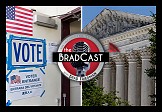 Good News and Bad: At the Polls and From the Corrupted Court: 'BradCast' 6/26/24
Good News and Bad: At the Polls and From the Corrupted Court: 'BradCast' 6/26/24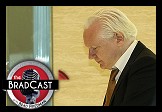 'Emptywheel' on Assange Hacking, Plea Deal: 'BradCast' 6/25/24
'Emptywheel' on Assange Hacking, Plea Deal: 'BradCast' 6/25/24
 VA GOP VOTER REG FRAUDSTER OFF HOOK
VA GOP VOTER REG FRAUDSTER OFF HOOK Criminal GOP Voter Registration Fraud Probe Expanding in VA
Criminal GOP Voter Registration Fraud Probe Expanding in VA DOJ PROBE SOUGHT AFTER VA ARREST
DOJ PROBE SOUGHT AFTER VA ARREST Arrest in VA: GOP Voter Reg Scandal Widens
Arrest in VA: GOP Voter Reg Scandal Widens ALL TOGETHER: ROVE, SPROUL, KOCHS, RNC
ALL TOGETHER: ROVE, SPROUL, KOCHS, RNC LATimes: RNC's 'Fired' Sproul Working for Repubs in 'as Many as 30 States'
LATimes: RNC's 'Fired' Sproul Working for Repubs in 'as Many as 30 States' 'Fired' Sproul Group 'Cloned', Still Working for Republicans in At Least 10 States
'Fired' Sproul Group 'Cloned', Still Working for Republicans in At Least 10 States FINALLY: FOX ON GOP REG FRAUD SCANDAL
FINALLY: FOX ON GOP REG FRAUD SCANDAL COLORADO FOLLOWS FLORIDA WITH GOP CRIMINAL INVESTIGATION
COLORADO FOLLOWS FLORIDA WITH GOP CRIMINAL INVESTIGATION CRIMINAL PROBE LAUNCHED INTO GOP VOTER REGISTRATION FRAUD SCANDAL IN FL
CRIMINAL PROBE LAUNCHED INTO GOP VOTER REGISTRATION FRAUD SCANDAL IN FL Brad Breaks PA Photo ID & GOP Registration Fraud Scandal News on Hartmann TV
Brad Breaks PA Photo ID & GOP Registration Fraud Scandal News on Hartmann TV  CAUGHT ON TAPE: COORDINATED NATIONWIDE GOP VOTER REG SCAM
CAUGHT ON TAPE: COORDINATED NATIONWIDE GOP VOTER REG SCAM CRIMINAL ELECTION FRAUD COMPLAINT FILED AGAINST GOP 'FRAUD' FIRM
CRIMINAL ELECTION FRAUD COMPLAINT FILED AGAINST GOP 'FRAUD' FIRM RICK SCOTT GETS ROLLED IN GOP REGISTRATION FRAUD SCANDAL
RICK SCOTT GETS ROLLED IN GOP REGISTRATION FRAUD SCANDAL VIDEO: Brad Breaks GOP Reg Fraud Scandal on Hartmann TV
VIDEO: Brad Breaks GOP Reg Fraud Scandal on Hartmann TV RNC FIRES NATIONAL VOTER REGISTRATION FIRM FOR FRAUD
RNC FIRES NATIONAL VOTER REGISTRATION FIRM FOR FRAUD EXCLUSIVE: Intvw w/ FL Official Who First Discovered GOP Reg Fraud
EXCLUSIVE: Intvw w/ FL Official Who First Discovered GOP Reg Fraud GOP REGISTRATION FRAUD FOUND IN FL
GOP REGISTRATION FRAUD FOUND IN FL


































